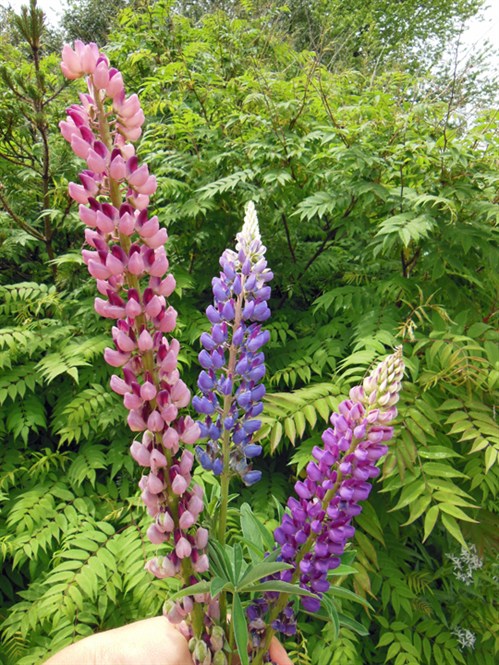While we cut for bouquets: Cull for the best self sowers
You're selecting your future crops whenever you clip cut
flowers
and deadhead the annuals and biennials that sow about in a
garden.
If you like plants with certain flower color or form, stem
length, or other characteristics, leave some flowers on those
plants that fit that bill so they will produce seed. Deadhead or
remove all the other plants. Over time you'll have more and more of
what you want.
Select for the best health, scent, sturdiness, even season of
bloom. All of these variables are passed on in seed. For instance,
if you allow the earliest blooming plant and the latest blooming
plant to set seed, you can develop a community of plants with an
extended bloom period.
Steven's great uncle liked lupine (Lupinus
polyphyllus). Although the species is not native to
the Upper Peninsula of Michigan where Axel lived, it is naturalized
there so he saw it often in wild places, collected seed from the
plants he liked, and sowed them on the hill behind his home. There,
we figure he regularly rogued out the colors he didn't like because
his hill was an all-blue show of this species that has the
potential for every color in the rainbow.
The seed we collected from deep blue-violet lupines on his hill
were probably the result of forty years of selection, or more. So
in our garden where Axel's lupines live on, in honor of his memory
we cull the other colors as they appear.
All three are pretty, but the blue-violet in the middle
would have been Axel's choice. We remember him by making it our
choice, too.
